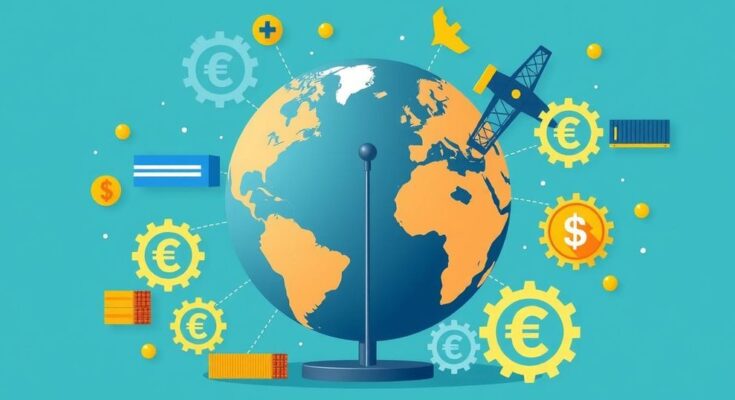President Trump announced a 26% “discounted reciprocal tariff” on Indian imports as part of measures against 60 countries with unfair trade barriers. This initiative aims to balance trade and increase US manufacturing. The Indian government is expected to respond amid ongoing trade discussions and adjustments to bilateral agreements.
On Thursday, President Donald Trump announced a new 26% “discounted reciprocal tariff” on imports from India, part of a broader strategy aimed at addressing trade imbalances with 60 targeted countries. He described this tariff as being half of what these nations impose on American goods, part of measures to enhance US manufacturing and balance trade.
In an address at the White House’s Rose Garden, Trump introduced a baseline 10% tariff on all US imports, with increased rates for specific countries, including India, China, Japan, and EU member states. Though he outlined these tariffs, ambiguity surrounded how the administration calculated the rates, as Trump characterized them as “kind of reciprocal” rather than fully equitable.
The President referenced the substantial tariffs imposed by India, claiming a 70% tariff on motorcycles and automobiles emphasized the need for adjustment. Trump’s comments included notable statements regarding Prime Minister Narendra Modi, reflecting on their previous meeting and the disparities in tariff rates, particularly for certain products.
In response to these newly announced tariffs, the Indian government is anticipated to articulate its position, although formal action might be delayed due to Prime Minister Modi’s prior commitments at the Bimstec Summit in Thailand. Modi and Trump had previously set a goal to substantially increase bilateral trade, aiming for $500 billion by 2030, and discussed a multi-sector bilateral trade agreement to build on existing trade relations.
The US Trade Representative noted that in 2024, bilateral trade between India and the US reached approximately $129.2 billion, highlighting growth in both exports and imports. The tariffs set for other countries varied, indicating a structured approach to trade negotiations, with specific rates for nations like China, the EU, Japan, and several others cited.
Trump criticized foreign nations for their tariffs, suggesting that investments would flow back into the US if those countries would reduce their trade restrictions and currency manipulation. He maintained that the implementation of tariffs would promote American economic growth, claiming they resulted in significant investments domestically. However, industry leaders expressed concerns about the implications of increased tariffs on economic competitiveness.
Market analysts have cautioned that such imposition of tariffs could trigger a series of retaliatory actions, leading to trade wars that might adversely affect the global economy.
In summary, President Trump has instituted a 26% tariff on imports from India, as part of broader reforms aimed at correcting perceived trade imbalances with various nations. Despite assertions of improved domestic manufacturing, concerns linger regarding potential retaliatory measures and their wider economic implications. Coordination with India on future trade agreements remains critical as both nations navigate these new trading conditions.
Original Source: www.hindustantimes.com




